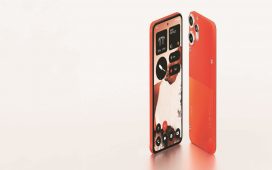TOPLINE:
Smartphone users spent significantly more time on the toilet than nonusers and had a 46% increased risk for hemorrhoids, according to results of a recent survey.
METHODOLOGY:
- Researchers conducted a cross-sectional survey in adult patients undergoing screening colonoscopy.
- Survey questions were designed to assess smartphone habits while using the toilet; responses to Rome IV questionnaires for functional gastrointestinal orders in adults; and other behaviors such as straining, fiber intake, and physical activity levels.
- The presence of hemorrhoids was assessed through direct visualization as documented in endoscopic reports.
TAKEAWAY:
- Among the 125 participants, 43% had hemorrhoids visualized on colonoscopy.
- Overall, 66% of respondents used smartphones while on the toilet; 93% of those used a smartphone on the toilet at least one to two times per week or more, and more than half (55.4%) used it most of the time.
- Smartphone use on the toilet was associated with a 46% increased risk for hemorrhoids (P = .044) after adjustment for age, sex, body mass index, exercise activity, and fiber intake.
- Participants who used smartphones on the toilet spent significantly more time there than those who did not; 37.3% of them spent more than 6 minutes per visit on the toilet compared with 7.1% of nonsmartphone users (P = .006), and 35% said they believed they spent more time on the toilet because of their smartphone use.
- The most common activity performed while on the toilet was reading “news” (54.3%), followed by “social media” (44.4%), and email/texting (30.5%).
IN PRACTICE:
“Prolonged engagement with smartphones while using the toilet may be associated with an increased prevalence of hemorrhoids,” the authors wrote. “Further research is warranted to explore causal relationships and examine behavioral modifications as strategies for preventing hemorrhoid development.”
SOURCE:
This study was presented on May 5 by Trisha Satya Pasricha, MD, MPH, Beth Israel Deaconess Medical Center, Boston, at Digestive Diseases Week (DDW) 2025.
LIMITATIONS:
It was not possible to draw conclusions about the cause and effect or explore the potential mechanism underlying the association due to the observational nature of this study.
DISCLOSURES:
No funding information was provided.











